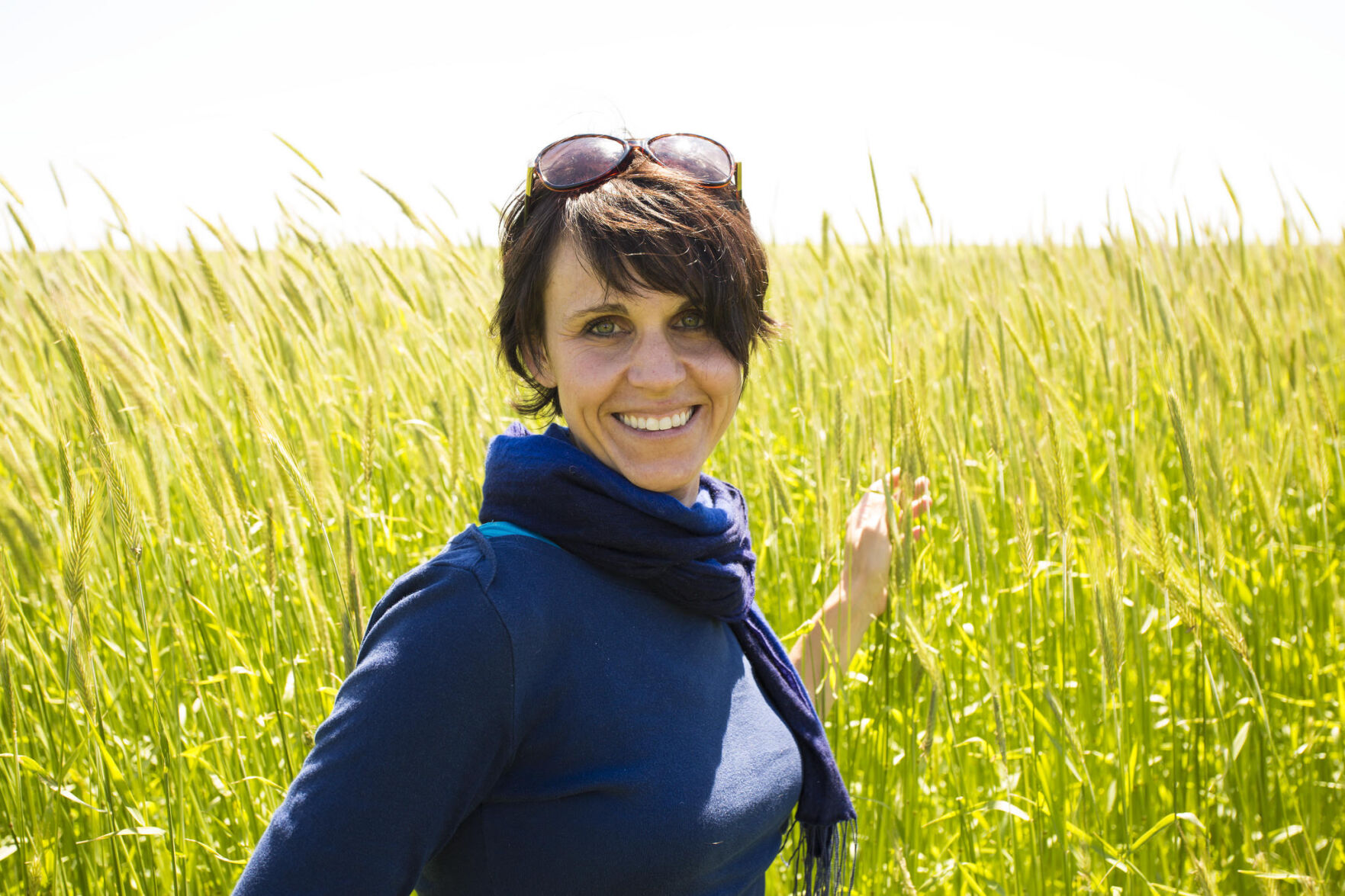Soil health sustainability helps producers to build for future, Silva says

Erin Silva is enthusiastic about sustainable and organic cropping practices, but she emphasizes the fundamentals of building soil health.
Silva is an associate professor in the plant pathology department at the University of Wisconsin-Madison. Her research and Extension program focuses on sustainable and organic cropping systems, including cover crops and cover crop-based no-till production, variety selection in organic environments and the impact of organic management on soil biological and physical properties.
Silva has launched “OGRAIN,” a comprehensive organic grain training program for farmers in the upper Midwest. She works closely with organic farmers and industry members both in the Wisconsin and upper Midwest and serves on the Wisconsin Organic Advisory Council.
Her background with no-till, no-till organic and sustainability and her interest in cover crops and how to maintain soil resources started around 2003. Her doctorate was from New Mexico State University and she spent many hours looking at how traditional crops and vegetable crops were produced. The systems were mostly irrigated and in arid cropping conditions. That meant the soil was often left bare unless it was used for a cash crop in production.
“As I had an opportunity to drive across New Mexico and visit farms one of the things that struck me was the visible soil loss at certain times,” she said, noting that windstorms turned soil into dust storms. “You could profoundly see the impact of the way crops were produced.”
She thought to herself what needs to be done to stop the loss of the topsoil and maintaining soil health while maintaining a highly efficient productive vegetable crop?
That led Silva to West Virginia researcher Ron Moore, who had used cover crops he terminated as mulches to suppress weeds and reduce herbicides. The process also maintained soil resources and kept soil in place, she said, and this continues to be a focus of her work.
Organic, no-till systems
Achieving a zero-tillage, complete no-till organic grain system does carry substantial risk, and she advised farmers to avoid a total change in operation because of the difficulty to strategically sequence crops and cover crops together. Plus integrating with mowers and roller crimpers to suppress the cover crops without hurting the cash crop has to be addressed.
Silva recommends producers use a phased-in approach beginning with rotational practices. Wisconsin has a shorter grower season than the southern Plains but growers have found success with sequencing crops, including cereal grains that can reduce soil disturbance.
“More and more farmers are starting to realize and recognize the value of regenerative agriculture more broadly,” Silva said. “The concept of cover cropping (with) no-till and integrating continuous living cover (crops) into your organic rotation is really directly in line with the principles of regenerative agriculture.”
Innovative farmers—both organic and conventional—are maximizing, rebuilding, and regenerating of soils and reducing synthetic inputs, she said.
Innovation continues to be adapted by farmers who are willing to share their stories, she said. The role of the producers, non-profits organizations and research by universities all are intertwined, she said.
In 2022, many producers have experienced the strain of weather caused by Mother Nature, higher input costs and a roller coaster marketplace. While this year stands out it is not the first time producers have faced obstacles, Silva said.
Leaders innovate
Farmers who are leaders in the regenerative agriculture movement are often the ones who first embrace sustainable practices and stewardship, she said. Many of those farmers have long adopted no-till practices with success in their operations. Adoptees continued to build and then took it to the next step with cover crops and they could see the benefits of a regenerative system.
The transition to organic crops though does rely, to a degree, on soil disturbance for weed management. A complete zero-till organic system is more for producers who participate in a widespread sustainable practice, Silva said.
If a producer is looking at going to an organic system, even the most innovative must realize the changes might include abandoning no-till practices that have been a part of their management system for many years. Silva said that decision to make a change may be limited because of individual circumstances plus environmental influences. Soil biology and structure is not all created equal and that is also a variable for consideration, she said.
Instead of focusing strictly on yields producers need to consider long-term economics, Silva said. The price of high yields may come in the form with soil quality loss. She prefers a model of soil longevity and sustainable long-term profits.
A holistic approach may offer an opportunity to lessen the need for fertility inputs, reduce disease incidence and lower herbicide applications. Over time, Silva expects research, in partnership with growers, seed, suppliers and retailers, to continue to make improvements as they all have a vested interest in seeing farmers and ranchers succeed.
Information for this story was from the Soil Solutions podcast with Jessica Gnad, the executive director of Great Plains Regeneration and soil health content consultant for High Plains Journal. Visit soilhealthu.net/podcasts to hear the podcasts. Sign up to receive the monthly Soil Health HPJ Direct newsletter and Soil Solutions podcast notifications by visiting hpj.com/signup and checking Soil Health.
Dave Bergmeier can be reached at 620-227-1822 or [email protected].



